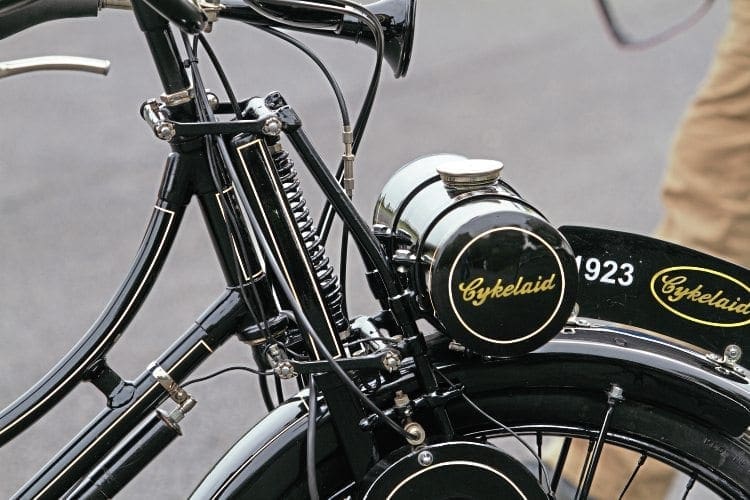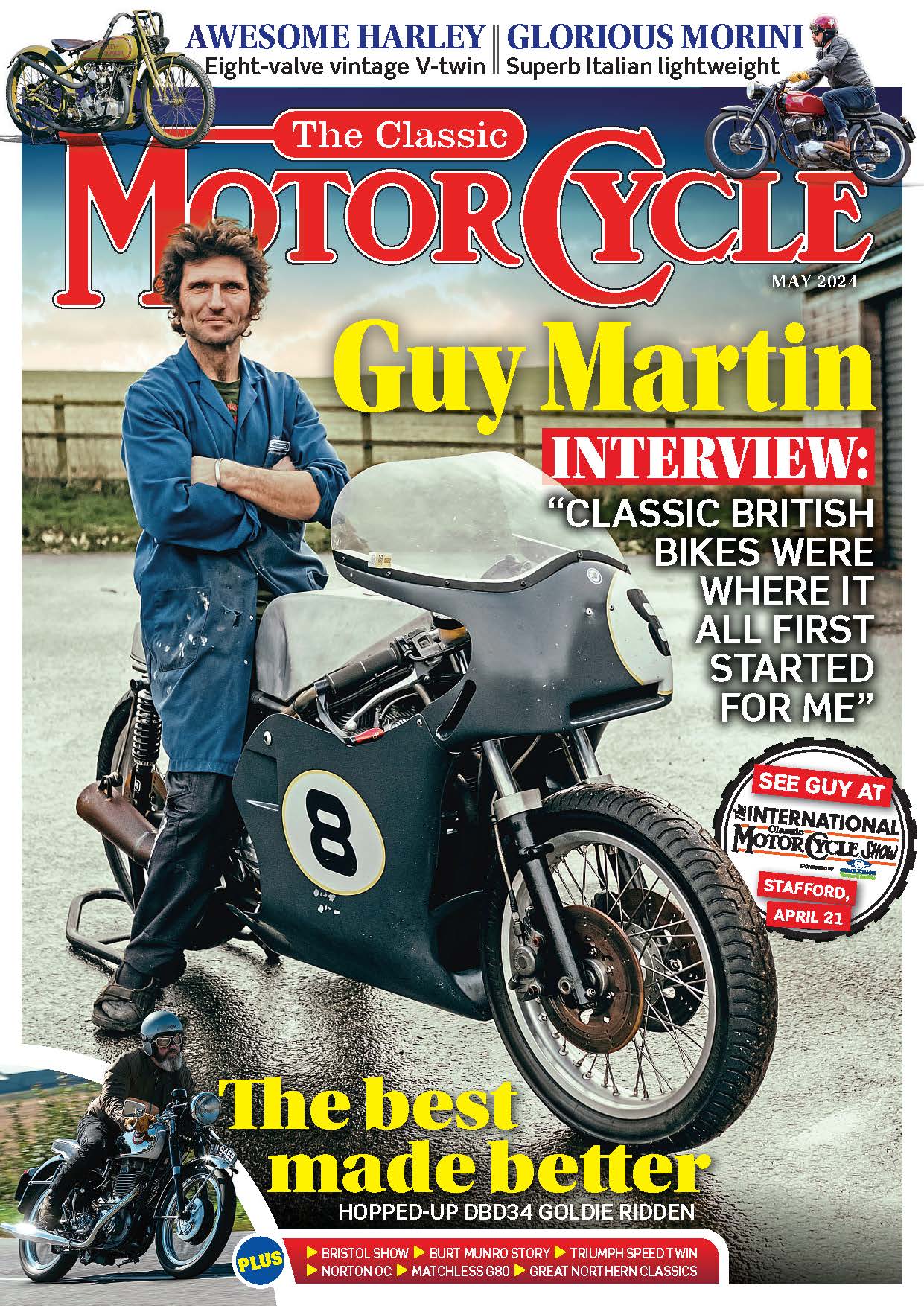At a time when transport for the masses was in hot demand, the Cykelaid offered ananswer for many.
Words: ROY POYNTINGPhotographs: TERRY JOSLIN
A quick glance at the Cykelaid gives the impression that it was some sort of antecedent to the ubiquitous post-Second World War VeloSolex. Well it is, and it isn’t.
Enjoy more Classic MotorCycle reading in the monthly magazine.
Click here to subscribe & save.
The idea of hanging the engine on the front wheel where it doesn’t interfere with the pedalling function of what is essentially a beefed-up pedal cycle is the same, and the performance is similar, but there are significant mechanical differences between the two.
Firstly there’s the apparently mundane matter of the tyres available when these machines were introduced.
Like most post-Second World War cyclemotors, the VeloSolex relied on a friction drive bearing heavily onto the front tyre.
But the Cykelaid was introduced three decades earlier when weakly reinforced beaded edge tyres were the norm, and I doubt if they’d have taken kindly to such stresses. Sooner or later the tyre would have burst and come off the rim, with a steering calamity the inevitable result.

The tyre problems would be compounded by the fairly primitive engines available when the vintage Cykelaid was launched.
The VeloSolex is a dainty piece of engineering whose 45cc engine produces adequate power to trundle a reinforced bicycle along at least as quickly as a fit cyclist, while the Cykelaid needs just about triple the capacity to achieve similar performance.
The physical size of that engine – allied to the contemporary use of a cast iron deflector piston and a hefty flywheel – would have further boosted the weight and stress imposed on the front tyre.
But as noted, both machines have their limited power applied to the front wheel for the very good reason that it saves the complication of marrying up the motorised drive with the pedalling gear.

And that – in the case of the Cykelaid – enabled its makers to offer customers the option of buying just the sprung front fork/engine assembly, and fitting it to their own bicycle in place of its original forks, when it was reckoned to increase all-up weight by 35lb.
Incidentally, this also meant that existing tricycles and tandems could be motorised, which might have been sensible in the former case but probably unwise in the latter.
Read more and view more images in the November 2019 issue of TCM – on sale now!
Advert
 Enjoy more The Classic MotorCycle reading in the monthly magazine. Click here to subscribe.
Enjoy more The Classic MotorCycle reading in the monthly magazine. Click here to subscribe.











